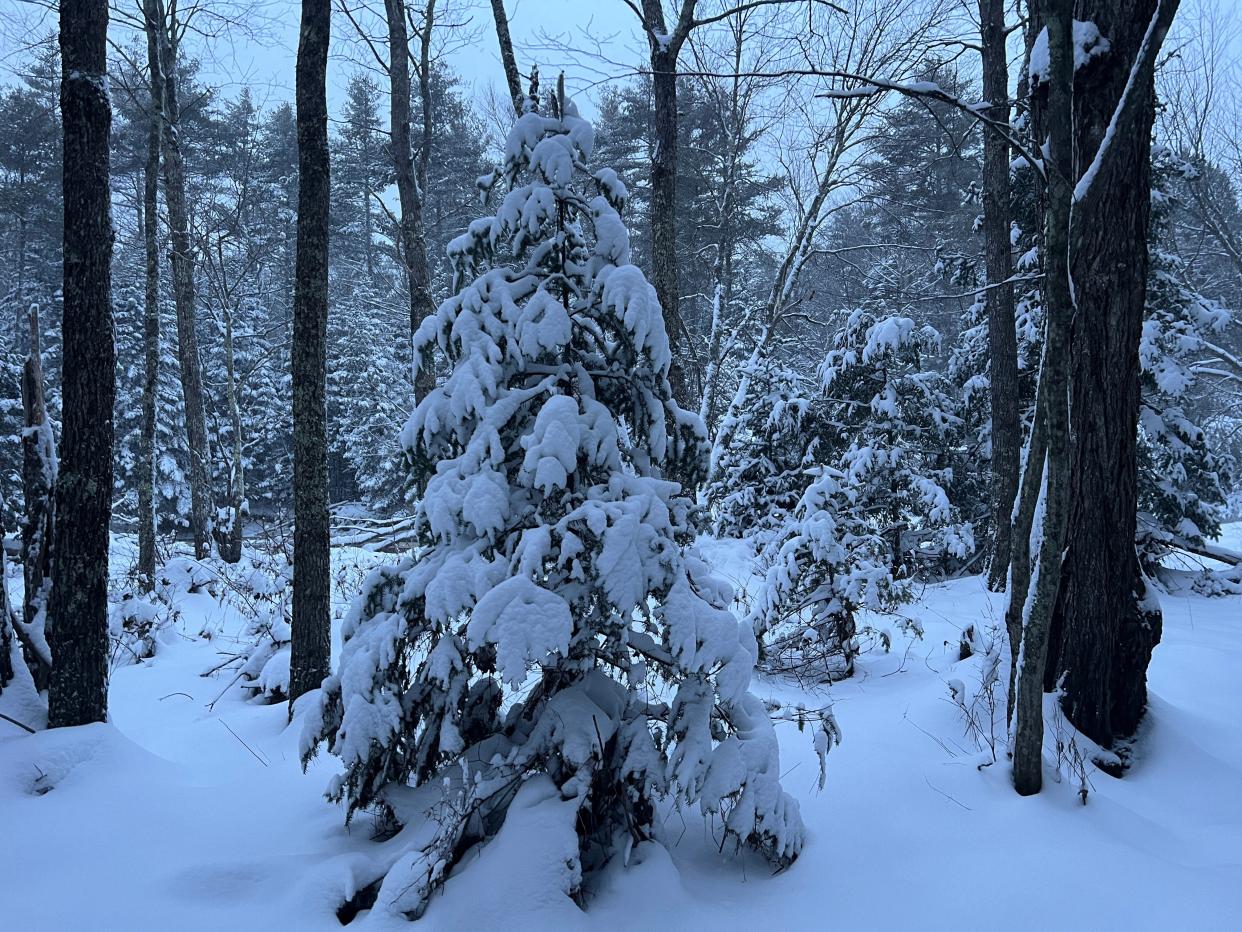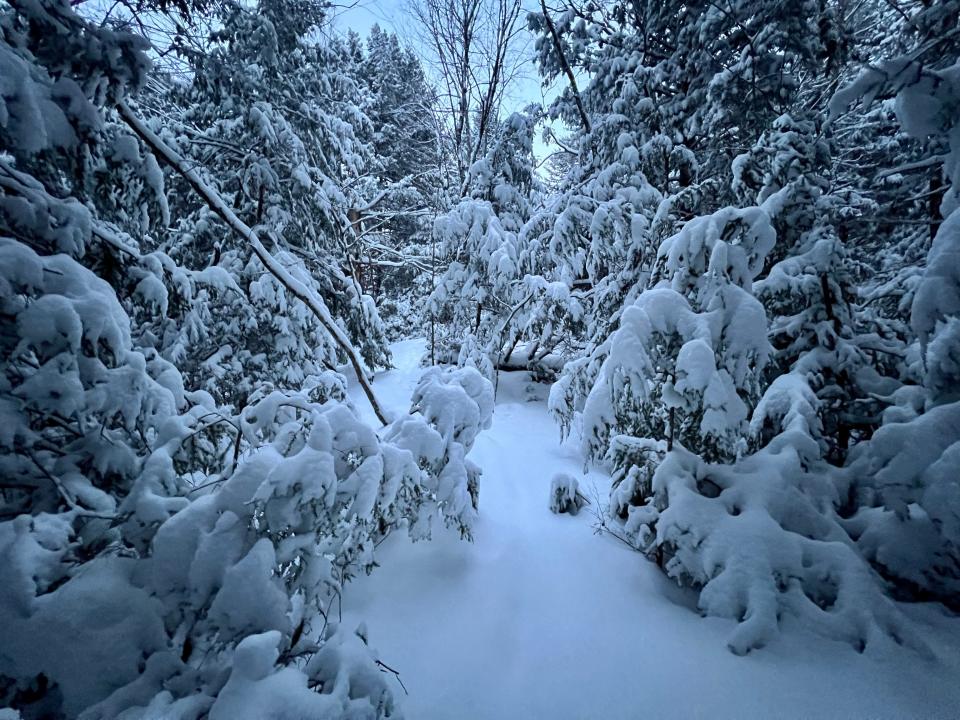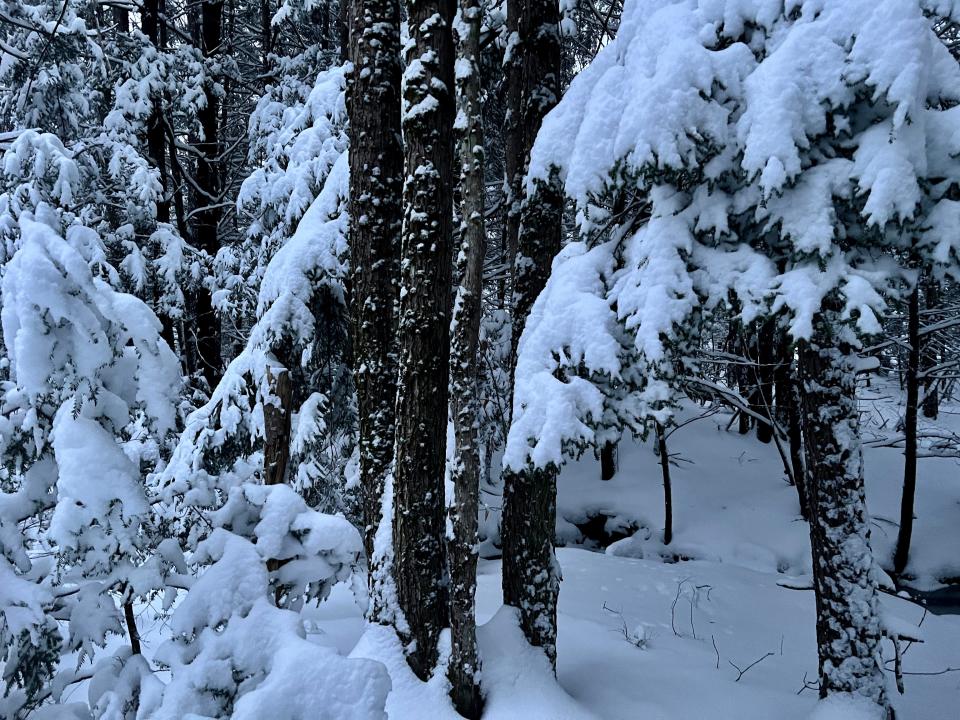The beauty and resilience of balsam fir and Eastern hemlock trees in winter: Nature News

We had our first winter snow storm this past weekend, a nice change from the warmer than usual conditions across most of the country. Snow is an important part of our local ecosystems, the plants and animals who live here are well-adapted to this. Some, like the snowshoe hare or short-tailed weasel, turn white in the winter for camouflage.
Chickadees and goldfinches double the amount of feathers they carry to help with insulation. Snow is also useful to our wild neighbors during the depths of a cold winter because snow insulates vegetation and the ground from deep cold. It provides a protected space beneath the snow — the subnivean zone — where small mammals can move about via connecting tunnels.

Topping my list of champions of snowy winters are our fir trees, which have numerous adaptations for wintery conditions. Eastern hemlocks and balsam fir are, literally, built for snow. The downward sloping branches of these firs are perfect for shedding snow. Instead of loading up the branches and breaking them, snow slides off, surrounding the tree with an insulating blanket of white.
One of the biggest challenges for trees in winter is not so much the cold and snow but rather the dry conditions. Available water freezes in winter, creating desert-like conditions for plants. Instead of losing their leaves like deciduous trees do to prevent water loss from their leaves, firs (and most conifers) have thin, needle-shaped leaves that help prevent water loss by minimizing surface area. The thick waxy cuticle (outer covering) on the needles also helps keep water in. The pores (stomata) that they use for gas and water exchange are positioned on the underside of the leaf, usually in a sunken groove that protects the stomata from drying winds. The stomata can open up if conditions are ripe for photosynthesis to take in carbon dioxide and release water vapor and oxygen, or can close if it is too dry to reduce water loss. If you take a close look at the underside of a balsam fir or Eastern hemlock needle you will see two white stripes. This is where the stomatal grooves are. The reason they are white is due to a waxy white coating around the stomata - the stomatal bloom - which also helps retain water when it is dry.

Why don’t hemlocks and firs just drop their leaves in the fall like deciduous trees? It seems easier. The driving force here is that by keeping their leaves year round these trees are maximizing the time they can photosynthesize. They don’t have to wait to grow new leaves in the spring. While photosynthetic rate might decrease in severe cold or drought these conifers can generally photosynthesize all winter. To help with this, their needles are typically a darker green than deciduous trees, darker colors absorb more light from the sun. Finally resin in the needles acts as an antifreeze to keep the needles from freezing solid (which would kill the needle). This resin does double-duty, it tastes bad and so deters predation by insects and larger herbivorous mammals. The resin actually does triple duty-when the needles fall from the tree, chemicals in the resin leach into the soil and create a toxic environment that discourages competing plants (this adaptation is called allelopathy).
This year I made a tree fort for the winter by clearing the dead branches beneath a huge balsam fir and hauling in some old logs to sit on. It worked perfectly! During the snowstorm this past weekend I sat underneath the tree, much like the deer that yard up underneath hemlocks to avoid deep snow, and peered out at the falling snow from the shelter of a well-adapted native of the north.

Susan Pike, a researcher and an environmental sciences and biology teacher at Dover High School, welcomes your ideas for future column topics. Send your photos and observations to spike3116@gmail.com. Read more of her Nature News columns online at Seacoastonline.com and pikes-hikes.com, and follow her on Instagram @pikeshikes.
This article originally appeared on Portsmouth Herald: Beauty and resilience of fir and balsam trees in winter: Nature News

